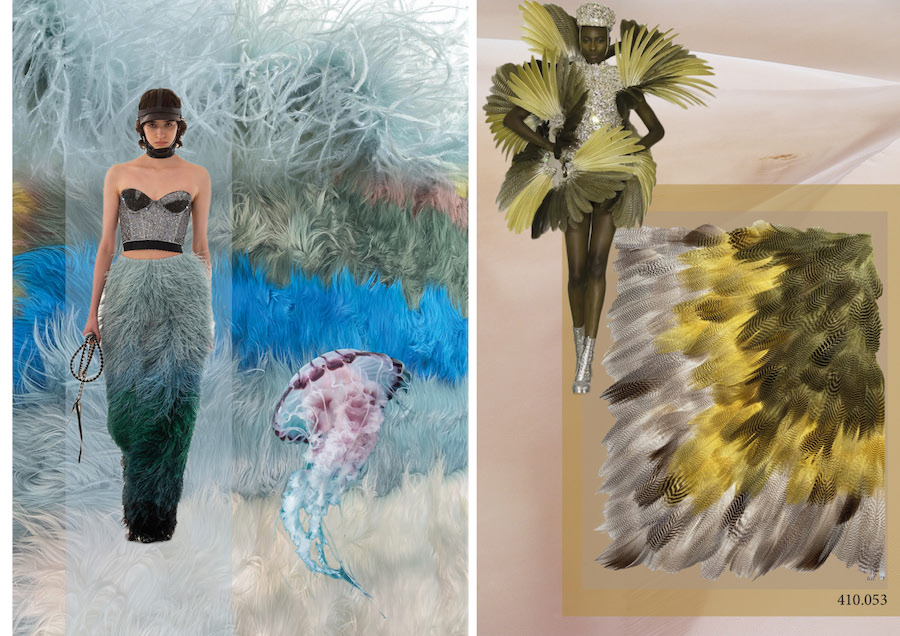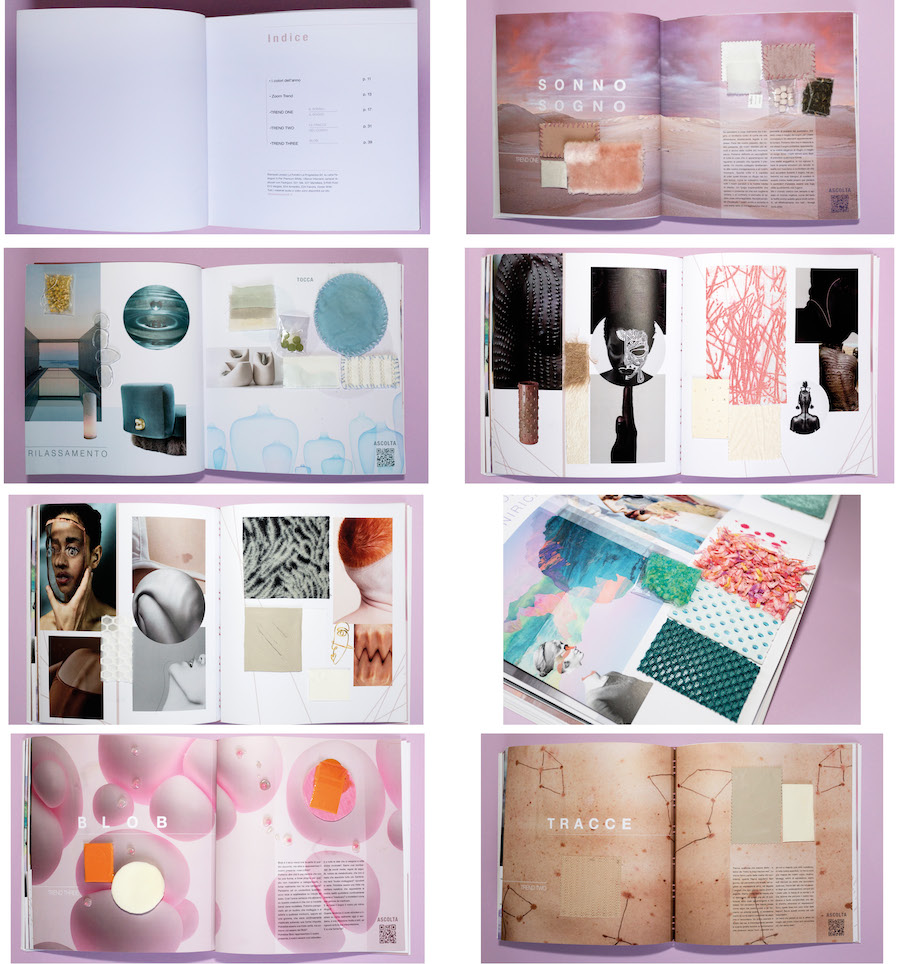11. Implications and applications¶
KLEIS BECOMES KELIS 2.0¶
I would like to point out before we start that this project for me started already 6 years ago with a research of materials presented for my thesis in a sensorial trendbook, called KLEIS. Which I hope with this new product KLEIS 2.0, will finally become, something that will guide me in my future..
I’m a Creative Consultant, and I work in the fashion/graphic and design industry with some clients in Italy. in particular I work with some clients as TREND & MATERIALS CONSULTANT and from this came my final project idea. My customers are manufacturers of embroidery, leather goods and feathers, and my final project was born from the idea of satisfying my desire to propose something new to these companyes in particular, but also from the desire to listen to their needs.
What is KLEIS?¶
During my university period I’ve perceived that we are now living in an aseptic world, but full of sensory inputs. Indeed, nowadays we look for polisensoriality everywhere. KLEIS is born from these feelings, in response to such perceptions. This brand new project offers a thrilling trip, load of sensory inputs, which urges people to discover what is around us, using not only our sight, but each one of the 5 senses. KLEIS is a book that can help us rediscover a complete sensoriality through personal research into colours/materials and new concepts.
Discover my project on my website
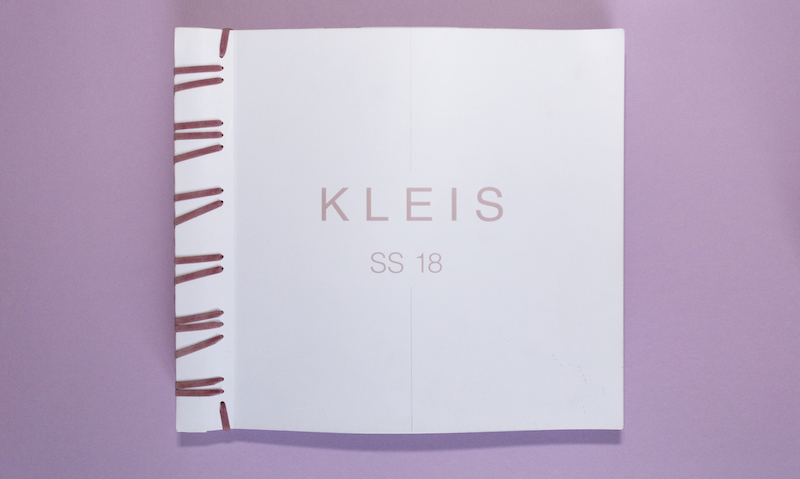
WHAT, WHY, WHO, WHEN, WHERE!¶



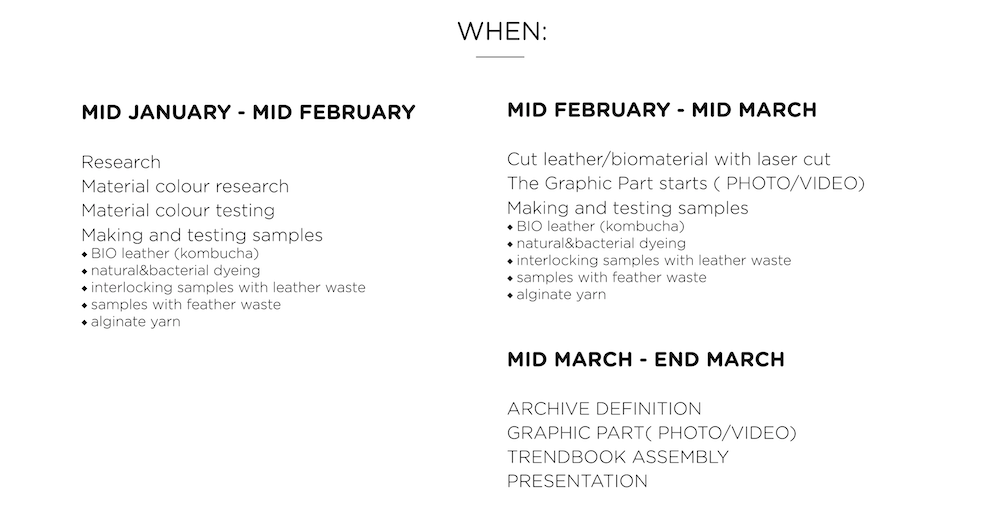

THE STRUCTURE OF KLEIS 2.0 TRENDBOOK MATERIAL¶
What will I create?¶
KLEIS 2.0 will be a materic trend book where you will find an archive of new materials/techniques/new dyes and a final product that I will create based on sustainable trends, for my customers in Italy and worldwide.
Subdivision Themes¶
Both the CIRCULAR TREND BOOK/CATALOGUE and the FINAL PRODUCT, arise from 2 sustainable sub-themes - which are also the chapters of the publication
Structure¶
There will be one macro-trend (circular fashion) and 2 sub-trends (SECOND& NEW LIFE LEATHER / SECOND&NEW LIFE FEATHER). Each trend will be developed into several trendbook pages containing 8/12 samples per trend with different material and presentation techniques, only one of which will then be presented in a final product. For an archive with a total of approximately 16/22 samples.
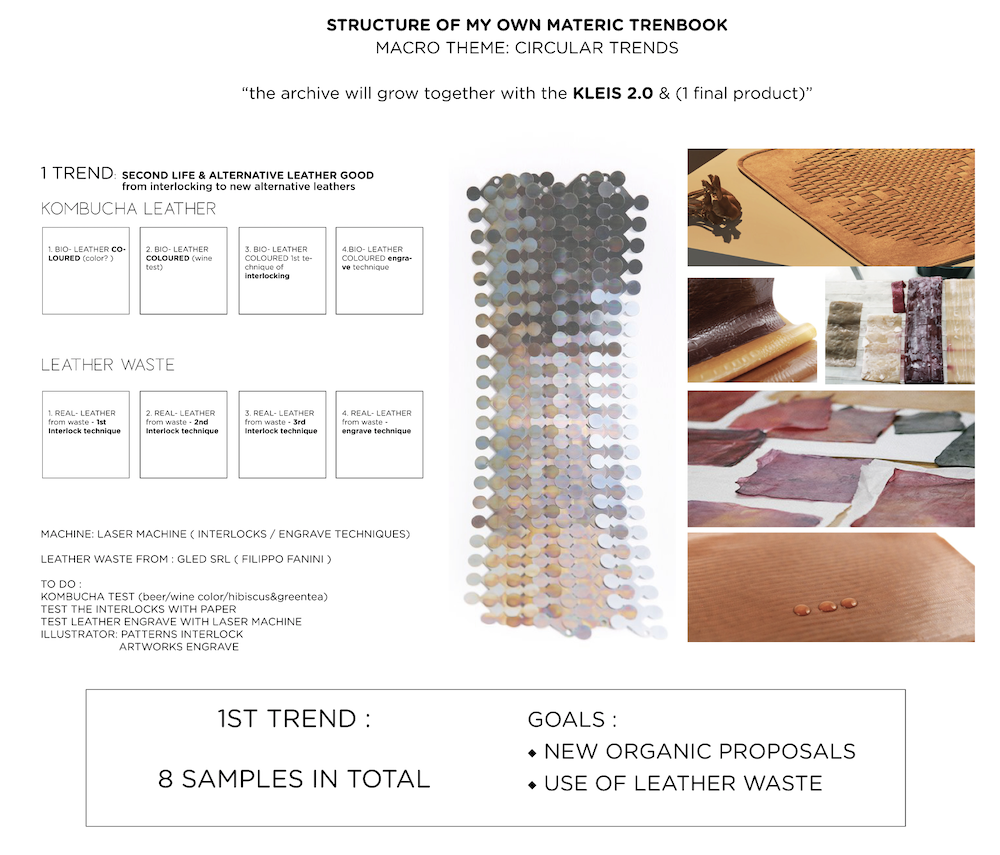
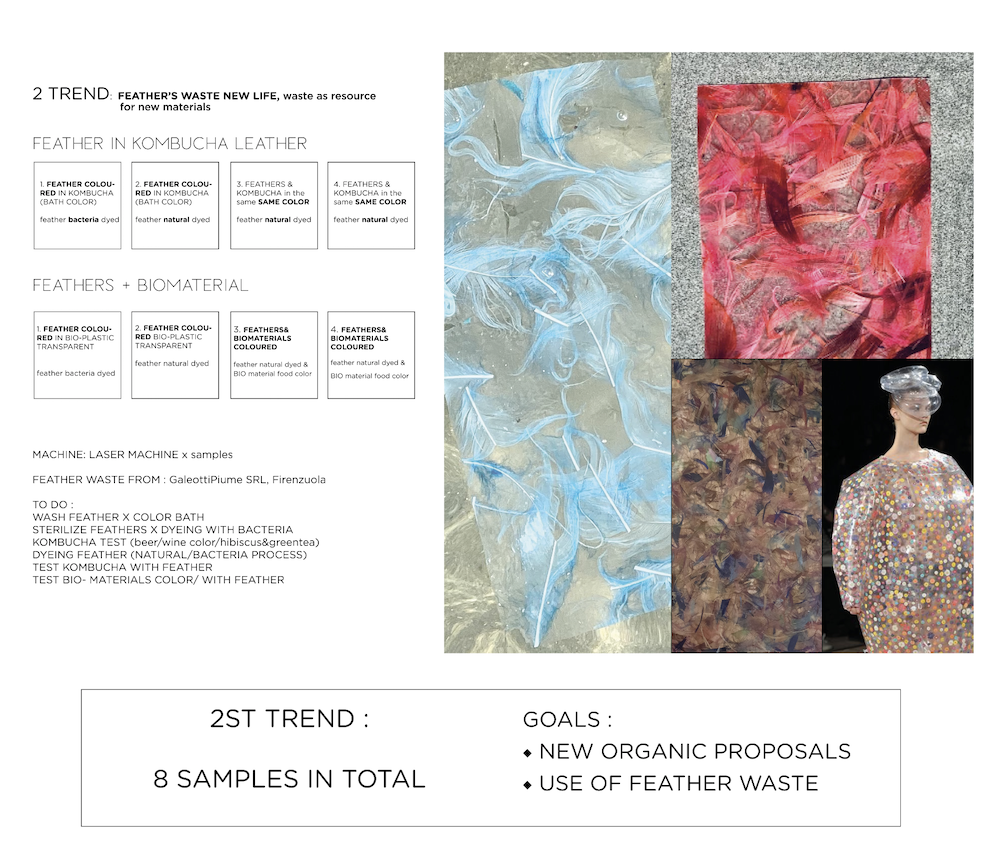
1ST TREND ON REAL LEATHER WASTE AND KOMBUCHA LEATHER - TECHNIQUE: INTERLOCKS & ENGRAVE¶
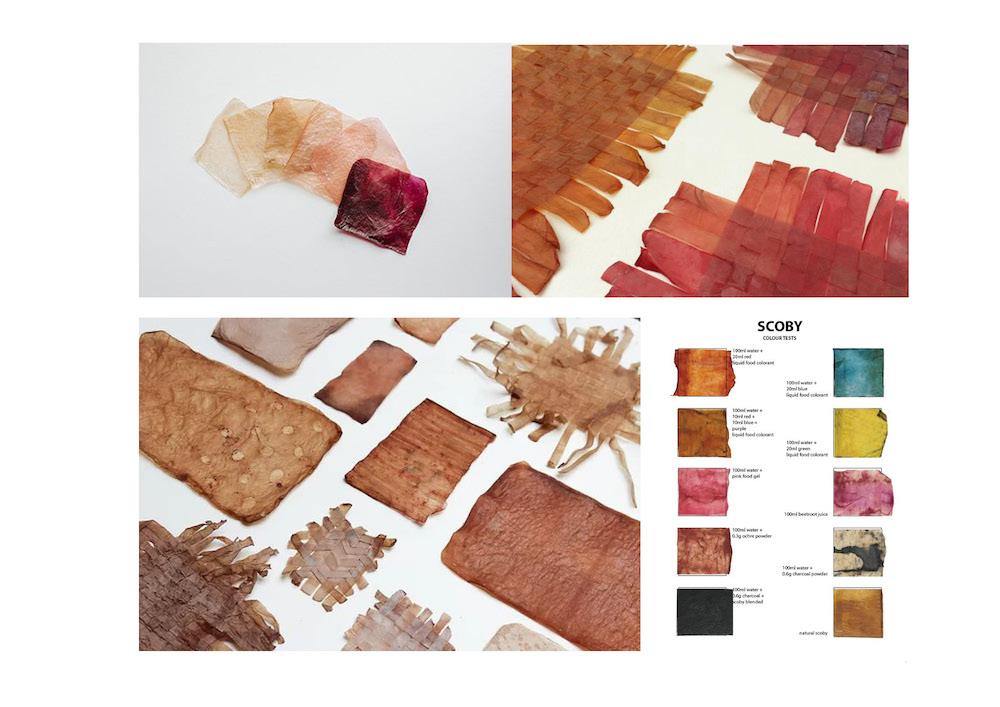

2ND TREND ON FEATHER WASTE AND BIO-PLASTIC&KOMBUCHA LEATHER TECHNIQUE: CUSTOMISE SURFACES¶
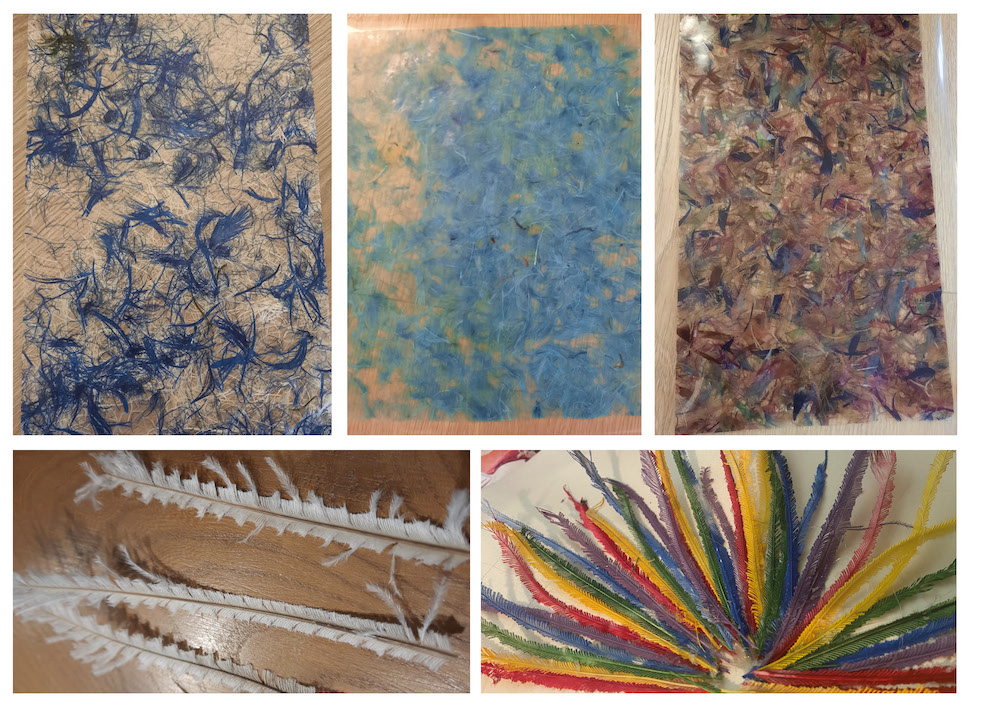

TIMELINE¶

Who is Alessia, what are my past experiences and what led me to do this path in Fabric Academy?¶
As you should do for every project you are about to realise, you have to look at your past, analyse your experiences and all those projects that others have realised and that have been an inspiration to us. Only then can you understand why I have come this far.
So I thought I would take a step back six years in my experiences to see which path was right for me. Although I already had an idea before starting this course, I can of course now define what themes I want to develop.
In my previous work experiences I was able to develop knowledge in the field of textiles, embroidery and accessories. For the latter I worked mainly in the research and development department, in close contact with the style office to research and develop all the materials for the various collections. At Vivienne Westwood I was responsible for research and development of prints and lace, and in my second stint at Salvatore Ferragamo I was responsible for research and development of all the fabrics for the collection, jacquards, prints and fabrics of all kinds. When I started working at Alexander Mcqueen I entered the world of embroidery, my favourite area. The job consisted of researching new embroidery designs based on the designers' input and then taking care of the entire embroidery development, from the idea to the pattern to the finished, ready-made garment. In this experience I got to know many materials, embroidery techniques and experimented from all points of view. After a year I was transferred to work at Gucci, and in this experience I always followed the area of embroidery but also that of accessories, so trimmings, buttons, brooches, buckles, everything that goes to embellish a garment. Until, after three years, I decided to leave my beautiful job to dedicate myself to something even more beautiful, but personal. So I started freelancing for my 'company', which is growing and which I hope will become a great creative hub full of experimental minds finding and proposing new ideas and solutions to customers.
One of the things I am most passionate about in my work is researching materials from all angles, embroideries, fabrics, accessories and vintage garments. But what I like even more is experimenting, new materials with techniques from the past. I believe that the two things must go together, the style and products of the past have made history, and today this history can be renewed from the point of view of materials.
So this project of mine has two objectives: 1. To propose new materials and new techniques (to propose to my customers). A source of inspiration in terms of techniques and concepts, something like a trend book on materials that can inspire in the field of trend research.
In Italy at the moment I am following several projects, with embroidery manufacturers, who have often asked me on a consultancy level if there was a way to obtain embroidery material according to a recycling process, bio-sustainable materials, or if it was possible to exploit waste material to create something new.
From these questions I started to think that perhaps the Fabric Academy could allow me to provide answers through my creativity. This is why I would like to create a personal sample book/archive of workmanship and new materials to present in the form of a material trendbook.
My project aims to answer questions about circular fashion, and the answer is yes, through my samples that will demonstrate how products can be given new life.
First theme - BIO LEATHER + REAL LEATHER - I create new joints in response to the production of leather goods in Italy. To demonstrate new types of leather/new assembly techniques that do not involve fully sewn parts, and above all how something valuable can be made from leather waste.
Second theme - FEATHER AND BIO PLASTICS, One of the clients I work with has a feather embroidery factory, produces ready-to-wear clothes for luxury brands and often has a lot of waste materials. I would like to be able to exploit feather waste to create new textures combined with durable bioplastics.
If I have time I would like to develop more than two themes and then also add a third and fourth theme
Third theme - EMBROIDERY ACCESSORIES, sample creation of embroidery accessories, sequins in bioplastics of various sizes and materials. Stones made of recycled plastic or resistant bioplastic.
Fourth theme - NEW SURFACES In this theme, I would like to develop some samples related to different processing techniques. 3D printed machine: Creation of lace and lacework /Creation of embroidered textures.
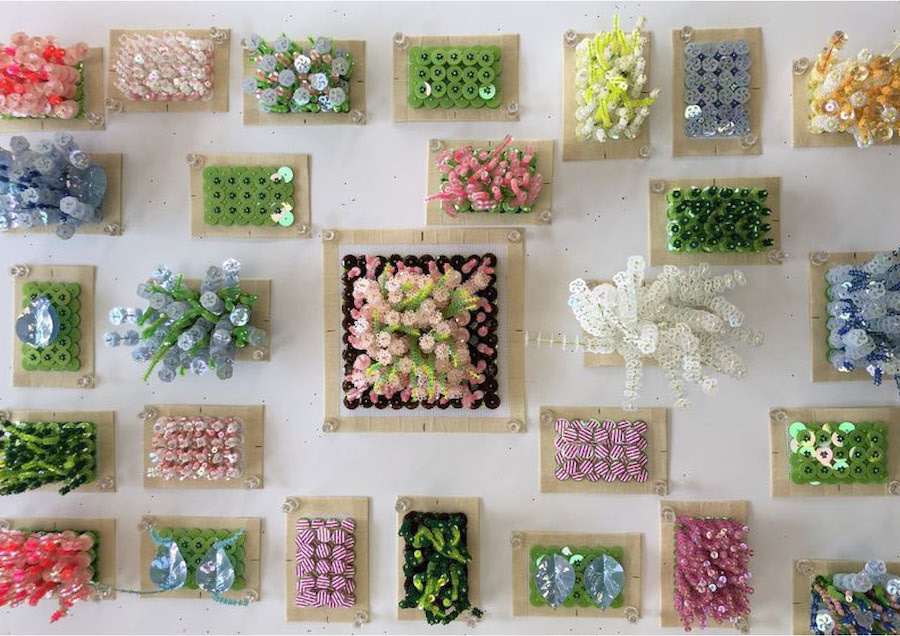
I would like to create a Materic book of new products to propose to my customers and beyond. I hope to open new doors to a new conception of material proposals, to create something that can provide inspiration for the trends and innovation area, from a material and design point of view. But I would also like to stimulate our minds to embrace a new approach to materials and show that we can certainly take new directions on mterials by opening the door to a bio.sustainable world, but we can also give a second life to everything that is discarded.


My passion for embroidery has led me to work closely with embroidery manufacturers in Italy and India. The world of embroidery is certainly one of the most stimulating for me from the point of view of craftsmanship and workmanship, it allows you to range in techniques and each time create something new, In my collaborations with clients I have been able to sense that there is a need for new materials in the embroidery field, especially from the material point of view. There are more and more controls from a sustainable point of view and when I work with India this seems to get worse and worse. We always try to make up for it in terms of material, but during the sampling process fewer and fewer materials pass the compatibility tests.
For this reason, I would like to study new embroidery materials. What is certain is that the customers I work for must ensure a product that lasts over time, and this in terms of bio-materials I am afraid does not meet my customers' needs. That is why my research aims to study how much and what waste is obtained by these people I work with, in the hope of being able to give new life to waste. Who said that a plastic scrap cannot become a sequin in a haute couture embroidered corset?
Let's open our minds and give materials a second life.
These are embroidery samples I worked on for a sample book, the theme of the project was to use scrap and recycled material. I used scrap metal, with already existing shapes and designed these symbols that we laser cut out of scrap metal strips. I used cotton buds and earring holders. I would like to do the same but with bio-materials and by recycling existing materials.

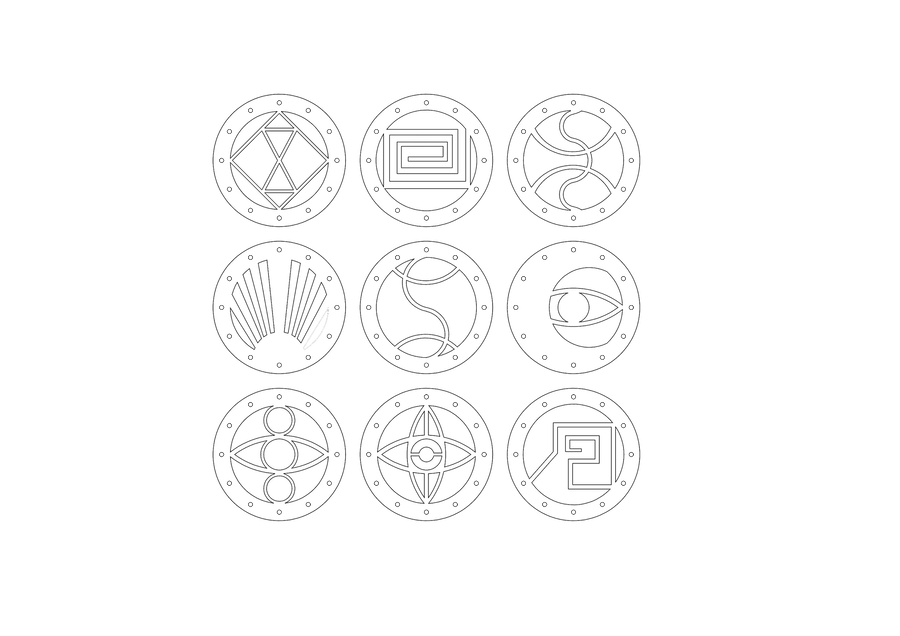
CLIENTS
 { width=300 align=left }
{ width=300 align=left }
 { width=300 align=right}
{ width=300 align=right}
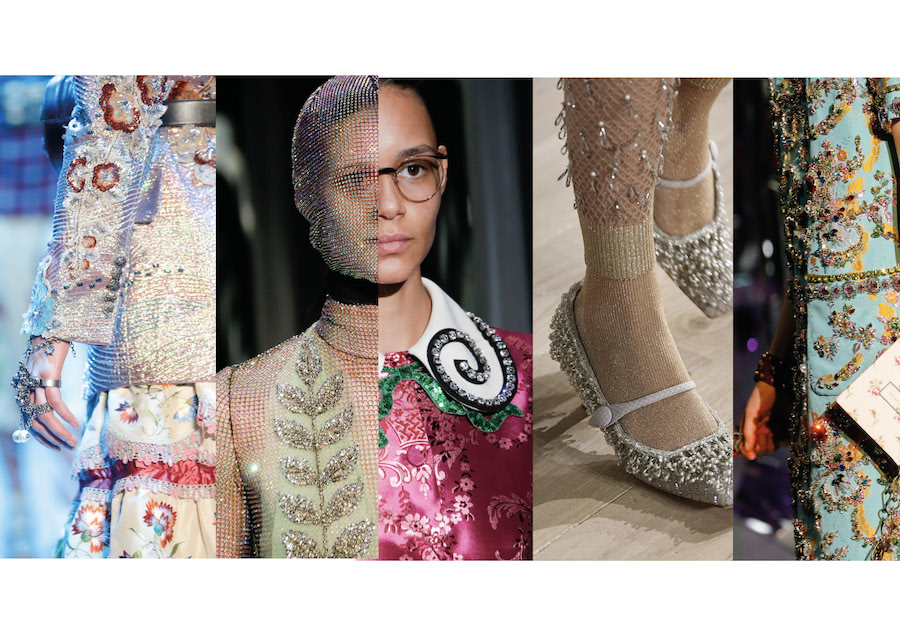
 { width=300 align=left}
{ width=300 align=left}
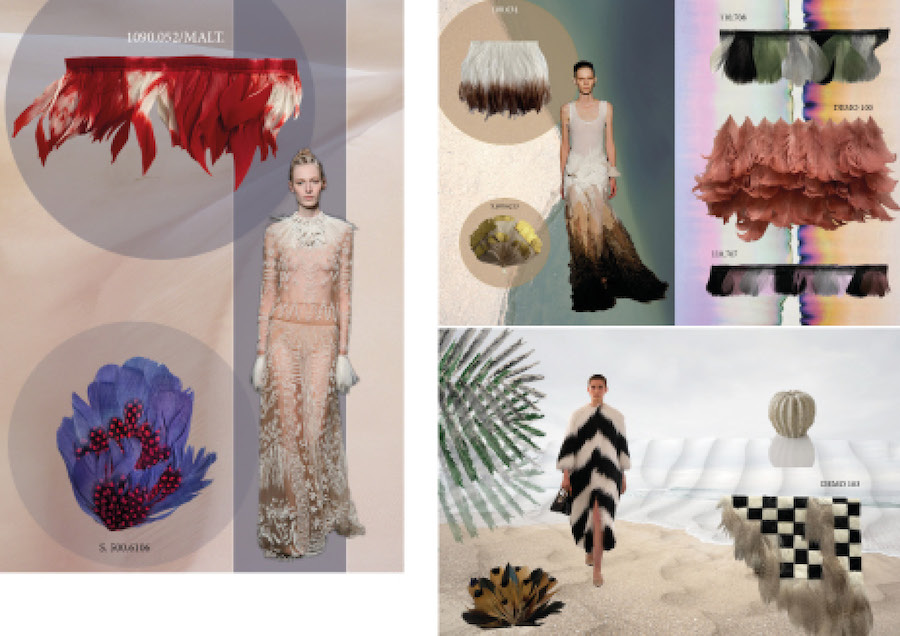 { width=300 align=right}
{ width=300 align=right}
